Fanucchi-O Drift
A epic tasting of Trousseaus Gris and Noir, featuring bottlings across 14 American producers and 10 distinct vineyards, with fruit primarily from a single vineyard in the Russian River Valley.
Originally from the Jura region located in the mountains of northeastern France, Trousseau Noir is a dark-skinned grape with many names, the most notable of which are from various parts of Portugal (Bastardo, Graciosa) and northwestern Spain (Merenzao, Bastarda, Tintilla, Verdejo Negro). As one of the Jura’s two indigenous grapes, winemakers here had prized Trousseau so highly that when threat of phylloxera was looming in 1896, it was one of the few varieties they had selected to replant. This status was further affirmed when it became one of the five grapes permitted under the Jura’s Arbois AOC in 1936 (one of France’s first AOCs).

Portugal is also home to more Trousseau1 plantings than any other country, where it grows in the Douro, Dão, and Bairrada regions as well as on the island of Madeira for its most famous bottlings of rare Madeira Bastardo wines. In addition, Trousseau once formed a significant part of Spanish winemaking in Rioja, where it is commonly known as Maturana Tinta, a majority of which was eradicated by phylloxera in the 19th century. Thanks to local viticulturalists, Trousseau is slowly re-establishing itself as a favored variety in the region (now cultivated on 736 acres and growing) and is also a preferred red variety of Monterrei DO in Galicia, having become more prized in recent years (despite its extensive use in this region for more than 200 years).
Also from the Jura, Trousseau Gris is a light pinkish-gray skinned mutation of the dark Trousseau Noir. It had always been used in field blends to produce white wines with interesting aromatic qualities but is now essentially extinct in France. Subsequently, it is known more definitively when Trousseau Gris arrived in California, with records in 1856 showing Frenchman Pierre Pellier imported what he would refer to as Gray Riesling, as which it continued to be known at its peak in the 1960s.
Unfortunately, it later disappeared for all purposes, lost to the more popular Chardonnay and Sauvignon Blanc. It wasn’t until 1992 the grape’s identity was confirmed as Trousseau Gris, at which time its name was changed officially by authorities. A resurrection among more daring winemakers has been surfacing in the last decade here, often employing very different vinification practices than in past years.
My fascination with the Trousseau Gris grape began in 2019 as one of the first esoteric grapes I had ever tasted (namely, a 2017 Jolie-Laide). I was captivated by its gorgeous color (light copper oscillating between pink and orange), delicate aromas, and elegant funk on the palate. I especially liked that the wine eschewed any clear classification or nomenclature.
I later read that Fanucchi-Wood Road Vineyard had the only planting of Trousseau Gris in California (incidentally from where the fruit was sourced for this Jolie-Laide bottling). While any considerable dent toward a famed region (e.g., Burgundy) or an international grape variety (e.g., Chardonnay) could quite easily become a lifelong examination, exploring this little-known grape exhaustively at a fraction of the cost and volume was, if desired, an attainable possibility worth entertaining.

An obsession shortly caught on here. After having that 2017 Jolie-Laide, I would stumble upon Two Shepherds’ 2018 skin-contact bottling and later come across its rarer Blanc of Trousseau Gris last made in 2016. My friend John would introduce me to Pax Mahle’s version (2020 Pax) at a wine tasting. I would start tracking wine auctions with “Trousseau” and “Trousseau Gris” as keywords, discovering one released by Fanucchi Vineyards in 2004 as well as two new-to-me Trousseau Gris producers, Zeitgeist Cellars and Forlorn Hope.
Forlorn Hope was particularly unusual in that its bottlings were not from Fanucchi-Wood Road (i.e., not the same provenance as the others): the labels instead read King Andrews Vineyard, Suisun Valley. I soon learned the producers with whom I was already familiar all used the same clone rootstock, but Forlorn Hope’s were cuttings from an abandoned vineyard in Calistoga which winemaker Matthew Rorick had re-planted at that vineyard in Suisun Valley. Plot twist: Fanucchi-Wood Road was no longer sole “grapekeeper” of Trousseau Gris in California!
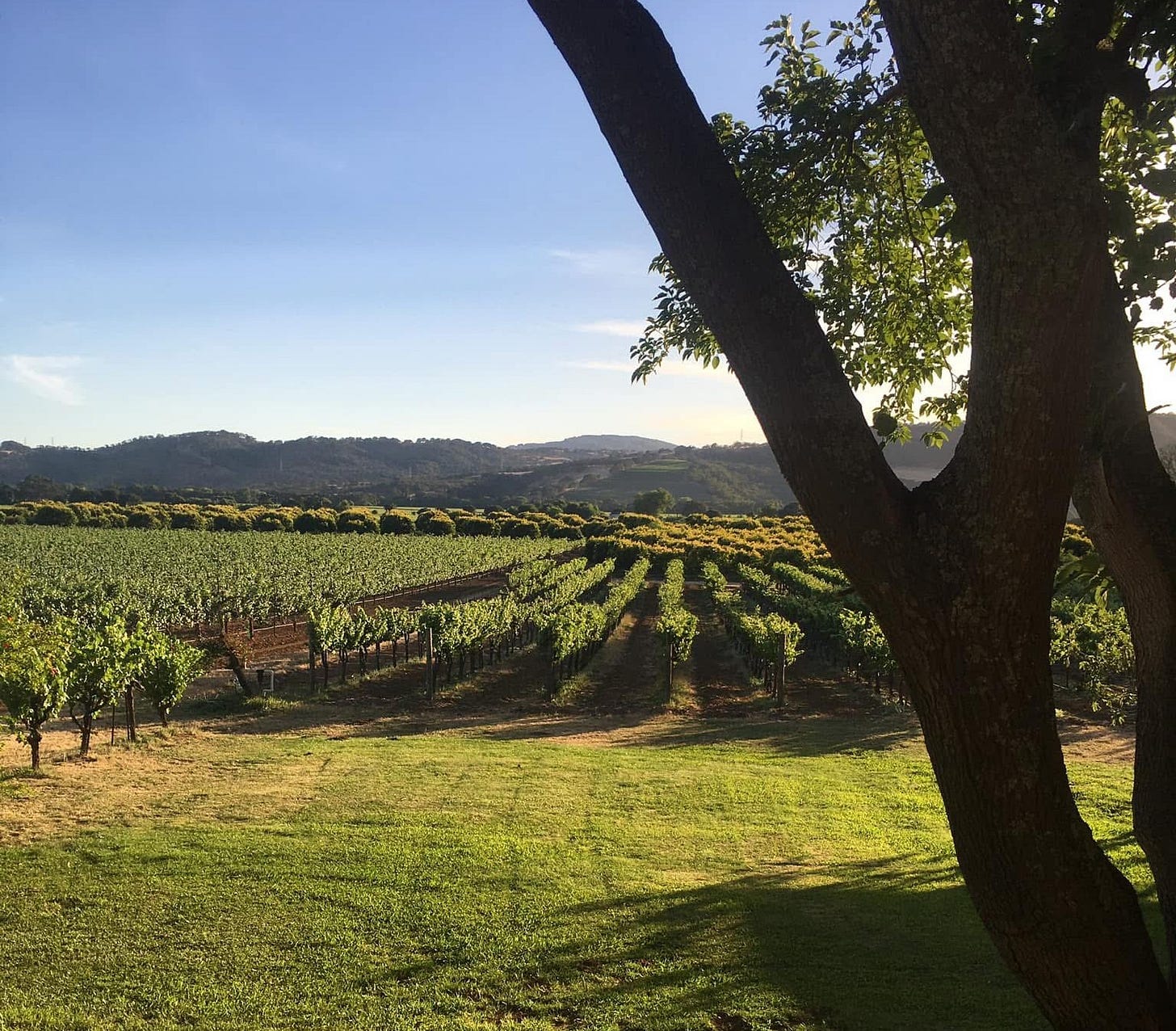
King Andrews Vineyard has one of the most unique small block white field blends to be found, directly resulting from a Heritage Revival Project started by Matthew in 2010 (with its current configuration completed in 2016). This Estate Block is a patchwork of old California white varieties that more typically produced “Chablis” in the 1940s-1950s, which are the heritage white grapes of Trousseau Gris, Chenin Blanc, Butschera, Chasselas Doré, Vermentino, as well as small amounts of Merlot and Cabernet Sauvignon.
This was a result of the research done by Matthew on of what a historic Californian white field blend would have been comprised, after which he took cuttings from some of the few remaining vineyards growing these grapes before the vines were pulled out of the ground, and convinced owner-grower Roger King of King Andrews Vineyard to create this “library block” from them (roughly around 2.6 acres in total). Matthew has since passed this block of grapes at King Andrews Vineyard as a proverbial torch to winemaker Martha Stoumen, who now works with this small block exclusively.

📬 Email: Friendly reminder this will likely be cut off in your inbox! This particular newsletter will be best viewed via Substack app or in your preferred browser. Happy reading 🙏
THE CONCEPT
This collective discovery had prompted stitching my loosely acquired collection of Trousseau Gris into a more coherent tasting. How incredible would it be to explore both vertical (vintage) and horizontal (producer) dimensions of this curious grape from one vineyard’s single planting? To taste a different clone rootstock grown elsewhere in the same state? To also pull in other styles of wine made domestically with its parental vine, Trousseau Noir? The plan was hatched: I eagerly waited for five current Trousseau Gris producers to release their 2021 vintages while I plotted which domestic Trousseau Noir wines to showcase.
As if curating this epic tasting wasn’t challenging enough, conjuring a clever name was my real Everest. All of my attempts had fallen flat (be glad Trousseau Gris Do-Si-Do was 86’d), so I have to give major props to my dear friend Lauren for the perfect moniker: Le Grand Prix du Trousseau Gris! And if rhyme and meter weren’t bonus enough: what kismet it was that I had nearly 20 bottles set aside through which to taste — the same number of racers engaged in a given Grand Prix race.
This first Le Grand Prix du Trousseau Gris in 2023 comprised 20 total bottlings across 13 American producers and 9 distinct vineyards, with fruit primarily sourced from Fanucchi-Wood Road Vineyard in the Russian River Valley. Here is the Tasting by the Numbers:
Later that year, I booked a private vineyard tasting with Two Shepherds Winery during a trip to California wine country with my friends Michele and Kevin. Because husband-and-wife duo William Allen and Karen Daenen of Two Shepherds knew of my penchant for Trousseau Gris, they arranged for us to visit with winegrower Peter Fanucchi himself at Fanucchi-Wood Road Vineyard (incidentally one door down from their estate vineyard). I left that visit incredibly inspired for my next grand tasting of Trousseau Gris.
My vision had changed a bit the following year, concocting a tasting sequel. Why not stick with the auto racing theme by tying in the Fast & Furious franchise? Thus, 2 Sseau 2 Glorious was born. I shifted the vertical spotlight to Two Shepherds as a tribute to our generous vineyard visit and had the horizontal portion focused on an older vintage (2018). Instead of sole breadth of producers for the Trousseau Noir portion, I opted for a vertical from Sandlands (2012 through 2016).

This tasting sequel comprised 20 total bottlings (plus 1 bonus) across 10 American producers and 8 distinct vineyards, with fruit sourced (once again) primarily from Fanucchi-Wood Road Vineyard. Here is the Tasting by the Numbers:
2025 has now evolved into this third tasting installment. I couldn’t not allude once again to the Fast & Furious franchise, so in honor of Peter Fanucchi, I have so named Fanucchi-O Drift after Tokyo Drift. I went ham on the horizontal and vertical tastings at both ends of Trousseaus Gris and Noir — go big or go home, right? I also really liked the idea of “bookends”: 100% Trousseau Noir from their indigenous regions (the Jura and Madeira) and in the typical style from those places (Crémant du Jura and Bastardo Madeira), from soup (sparkling) to nuts (fortified).
This year’s tasting featured 20 total bottlings (plus 1 bonus) across 14 American producers and 10 distinct vineyards, with fruit sourced primarily, of course, from Fanucchi-Wood Road Vineyard. Here is the Tasting by the Numbers:
Since 20+ wines are a lot to get through in a single evening, I’ve always included what I call the Racer Matrix (see below): each wine is bucketed by Trousseau Gris vs. Noir then color coded (see legend) and marked in a matrix grid by producer (y-axis) and by vintage (x-axis) so tasters can visualize the entire tasting experience before them. It shows the breadth of vintage while also showing the areas of overlapping commonalities. They can choose their own adventure — whether that means going in sequential order; side-questing through various horizontals (producer) and verticals (vintage); or exploring similar winemaking styles together (direct press vs. rosé vs. skin contact).
THE CARTOGRAPHY NOTES
PRELUDE: Vin Mousseux de Qualité (du Jura)
ARBOIS, JURA, FRANCE
Established in 1936, Arbois is the oldest AOC of France.
No. 00: The Provenance
I’ve always kicked off Le Grand Prix du Trousseau Gris with a Crémant du Jura as an homage to the Jura, the native homeland of Trousseaus Noir and Gris. For me, it was important that this wine not only be sparkling but also contain some portion of the Trousseau grape variety.
The inaugural tasting was from one of the first domaines in the Jura to convert to organic agriculture: Domaine Tissot’s Crémant du Jura Rosé, an indigenous blend of 60% Pinot Noir, 20% Trousseau Noir, and 20% Poulsard. Not wanting to repeat this cuvée, I found another one from the same producer: Crémant du Jura ‘Cuvée Indigène’, another indigenous blend, only comprised of 50% Chardonnay, 40% Pinot Noir, 5% Poulsard, and 5% Trousseau Noir.
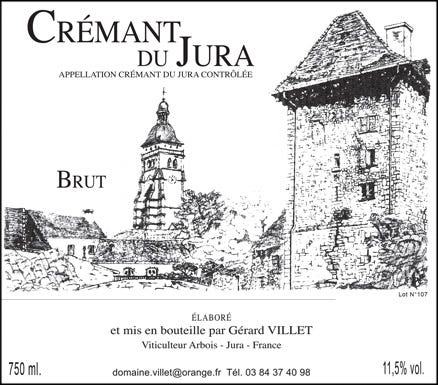
In another non-repeating attempt for this go-around, it was pretty challenging to find another Crémant du Jura that contained known amounts of Trousseau Noir, let alone one that was a varietal bottling. I stumbled upon Domaine Gérard Villet’s Crémant du Jura Rosé, which checked ALL the boxes except for key one: being in stock. Several stores in California had once carried it along with Chambers Street Wines in New York, but alas, nothing as of late. I reached out to the team at Sacred Thirst Selections, asking where I might be able to acquire some bottles. Thankfully, I was able to place a special order through San Francisco outpost of Flatiron Wines, so major thanks to Tucker and John at Sacred Thirst for helping make this happen!

Domaine Gérard Villet NV Vin Mousseux de Qualité Rosé
The family behind Domaine Gérard Villet has been making wine in this pastoral region of the Jura since 1900, with the domaine presently managed by husband and wife Gérard and Christine Villet. Converted to organic farming practices in 1988, the estate is now comprised of 5.4 hectares, with half of the vines planted to Chardonnay and the rest comprised of decreasing smaller amounts of Savagnin, Poulsard, and Trousseau.
Their Vin Mousseux de Qualité Rosé is made of 100% Trousseau (a rarity in the region in my experience), which is hand-harvested, fermented, and aged on the lees for 30 months. This is significantly longer than the 9-month minimum required for the Crémant du Jura AOC. The extended time on the lees gives this sparkler a medium bubble intensity and a true méthode traditionnelle quality.
While the prior iteration of Vin Mousseux was released under the Crémant du Jura AOC, this current release is made exactly in the same manner (i.e., traditional method) as its predecessor, with fruit sourced from the same vineyards — only difference is at lower ripeness and ABV levels, which do not abide by Crémant du Jura’s AOC requirements.
This Vin Mousseux of Trousseau Noir was not only much darker than I was expecting, it also very savory with much lower acidity than the Crémant du Jura rosé cuvées I’d been used to seeing. Consequently, this wine made for a much better interlude after the Trousseau Gris part of the tasting or before the two “dessert” wines. For this reason, I needed something bright and festive to start things off, so I asked my friend Jay of Jersey Wine & Spirits to help remedy this with an NV Crémant du Jura from Fumey-Chatelain, comprised of 100% Chardonnay harvested from estate vines in Montigny-lès-Arsures.
MAIN TRACK: Trousseau Gris
FANUCCHI-WOOD ROAD VINEYARD, RUSSIAN RIVER VALLEY, CALIFORNIA
The Fanucchi-Wood Road Vineyard in Sonoma County is practicing organic and dry-farmed with its Trousseau Gris block dating to 1981, grown on AXR-1 rootstock (i.e., not yet infected by phylloxera) and believed to be the largest planting of Trousseau Gris in the world (thus, the rarest on the planet, with only 10.5 acres rooted here). Peter Fanucchi and his family chose Trousseau Gris because they found the cool coastal influences of the Russian River Valley were very similar to the climate in Eastern France where the grape originated. These vines were planted in sandy loam soils to a quadrilateral trellis system, high off the ground to reduce frost risk. There is now a waiting list2 for fruit from Fanucchi’s vineyard: when Jolie-Laide first bought fruit in 2010, it was $800 per ton, whereas the current going price is $3,000 per ton!
No. 01: The Pioneer (Vertical)
Pax 2022 Trousseau Gris Rosé
Pax 2021 Trousseau Gris Rosé
Pax 2020 Trousseau Gris Rosé (400 cases)
Winemaker Pax Mahle began working with Trousseau Gris under his former brand Wind Gap Wines, as the label started as an outlet for experimentation with esoteric varietals and wines that did not fit the Pax portfolio, a name in tribute to the gaps in the coastal hills where his best vineyards are situated. After Pax re-launched his eponymous label in 2014, he began bottling Trousseau Gris under Pax.
The Trousseau Gris Rosé wines are hand-harvested over 4 weeks (with 3 total passes), crushed by foot, and fermented with indigenous yeasts in concrete before undergoing élevage in stainless steel and neutral French oak for 45 days. As a pink berry grape, Trousseau Gris cannot make red wine, and macerating its skins doesn’t exactly yield rosé, leading Pax to make his bottling in the Ramato-style of northern Italy: a skin-contact winemaking style a few Italian winemakers apply to Pinot Grigio (similar in color to Trousseau Gris).
2022 was a warmer vintage, showing more density of fruit. 2021 was lighter and higher in acid, while 2020 had the lowest yield to date.
No. 02: The New Wave
Two Shepherds 2022 Trousseau Gris Skin-Fermented (425 cases)
Named ‘insane master of small lots’, winemaker William Allen crafts about 15 different wines each vintage, including some that are only 1-2 barrels.
The skin-contact Trousseau Gris from Two Shepherds were fermented with native yeast on the skins for five days to extract color, flavor, and texture, then aged in neutral barrels for 8 months. For the 2022 release, grapes were de-stemmed, allowing a fresh and vibrant expression.
No. 03: The Protégé (Vertical)
Jolie-Laide 2022 Trousseau Gris Skin-Fermented
After apprenticing at several cellars in California, winemaker Scott Schultz wound up working for Pax Mahle in 2010, during which time Scott started experimenting with the then-obscure Trousseau Gris grape. Incidentally, Jolie-Laide’s Trousseau Gris bottling is the one that sparked this winemaking project in the first place.
Some skin contact in Jolie-Laide’s Trousseau Gris resulted in roseate hue and subtle tannin. Wines were crushed by foot and left to macerate whole-cluster for a few days, then pressed and naturally fermented in neutral puncheons and stainless steel followed by 6-month élevage in neutral barrique. Handled identically to Pinot Gris in cellar, grapes were stomped by foot then cold-soaked for three days before 6-month maturation in neutral barrels.
No. 04: The Classic (Vertical)

Zeitgeist Cellars 2022 Trousseau Gris Blanc
Zeitgeist Cellars 2021 Trousseau Gris Blanc (440 cases)
Zeitgeist Cellars 2020 Trousseau Gris Blanc
Roughly translated in German as ‘the spirit of the times’, zeitgeist is an attempt to capture the mood of an era through the lens of cultural, ethical and spiritual practices. For the last 14 years, Zeitgeist Cellars of Napa Valley has been on a mission3 to capture the spirit of both the land and the times. Founded in 2005 by winemaker Mark Porembski, who was joined shortly after by his wife, winemaker Jennifer Williams, the winery makes only 1,000 cases of wine per year. As is the case with many small wineries, the couple does nearly all their own work (from processing the grapes and making the wine to blending and bottling) while they each hold down additional winemaking jobs at other wineries and share the duties of caring for their three young daughters.
For Zeitgeist’s Trousseau Gris, grapes were pressed the moment they arrive at the winery, opting for a fresh white wine style. Pressed lightly to avoid any bitterness, the juice is transferred to stainless steel barrels and fermented at low temperatures (with no malolactic), taking as long as 6 weeks to finish. Wine is aged on its lees before the blend is assembled and bottled in February post-harvest.
No. 05: The OG
Fanucchi Vineyards 2004 Trousseau Gris Blanc (550 cases)
Winegrower Peter Fanucchi began working at the age of 9 in 1972 with his father Arcangelo, who had purchased a very old vineyard property in the Russian River Valley on Wood Road in Fulton, California. Peter and his father quickly became friends with their veteran wine grape growing neighbors who taught them traditional viticulture methods which they rigorously employed on the circa 1906 Zinfandel vineyard. As with traditional field blend vineyard plantings made by most Italian growers of the late 19th century, their family vineyard was no exception. Planted amongst the Zinfandel vines were vines of different varieties, one of which was Trousseau Gris. They had discovered it thrived in their vineyard, so after purchasing the fallow land next door in 1981, the Fanucchis planted more Trousseau Gris in 1981.
Production is very limited at Fanucchi Vineyards, only making 1,000 cases per year. He is one of the original members of the Russian River Valley Winegrowers Association. Estate grapes were vinified on-site.
I was absolutely floored at how well Fanucchi’s 2004 Trousseau Gris in spite its 20+ year age. I credit the generous ABV of 14.2% as being an excellent natural preservative.
No. 14: The Charmed
Carol Shelton 2006 Trousseau Gris ‘Sweet Caroline’ Late Harvest [375mL] (226 cases)
Winemaker Carol Shelton has been a pioneering figure in the California wine industry for decades, gaining recognition for her innovative winemaking techniques, dedication to quality, as well expertise in crafting Zinfandel and other unique grapes. Her involvement with Trousseau Gris dates to her time at Rodney Strong Vineyards in the 1980s, where she worked with Fanucchi fruit. She later founded Carol Shelton Wines in 2000, focusing on Zinfandel but also experimenting with lesser-known varieties, including late harvest versions of Trousseau Gris under the name Sweet Caroline.
Grapes for Sweet Caroline were harvested in late October 2006 at 30ºBrix grapes and soaked overnight on the skins then pressed and cold-fermented to be aged in temperature-controlled stainless steel to preserve fruit.
Similar reaction to Fanucchi’s dry 2004 Trousseau Gris, I was also impressed by how well balanced the 2006 Sweet Caroline Late Harvest remained, even at nearly 20 years old. I suppose the residual sugar did a great job of keeping things together.
OTHER DOMESTIC QUALIFIERS: Trousseau & Beyond
In the spirit of it being a well-traveled variety in Europe, Trousseau’s plantings have been increasing of late far from its native territory – in fact, current estimates suggest Trousseau Noir likely totals less than 75 acres across Oregon and California combined. American winemakers throughout these two states are cultivating both Trousseau Noir and Trousseau Gris to craft a range of intriguing, still, sparkling, fortified, and skin-contact wines.
Although its success stories are in cooler areas, including the Central Coast, Sonoma, and Willamette Valley, Trousseau Noir’s propensity to ripen fast in hot climates may make it better suited to many coastal sites than Pinot, especially in the face of climate change. With a higher number of natural tannins than many other light-bodied red wines, Trousseau is also more apt for low or no sulfur winemaking.
No. 06: The Field Blend
HOOD RIVER VALLEY, COLUMBIA GORGE, COLUMBIA VALLEY, OREGON
Hiyu is a 30-acre farm in the Hood River Valley. Guided by nature and inspired by ideas from biodynamics and permaculture, the team tends vines, raises animals, gardens, cooks and makes wine to reveal an experience of place. The site lies just 22 miles from the summit of Mount Hood, with wines shaped by the weather from the mountain. The place is closest to winegrowing areas of the Alps, the French Savoie, the Swiss Valais, and the Italian Valle d’Aosta.
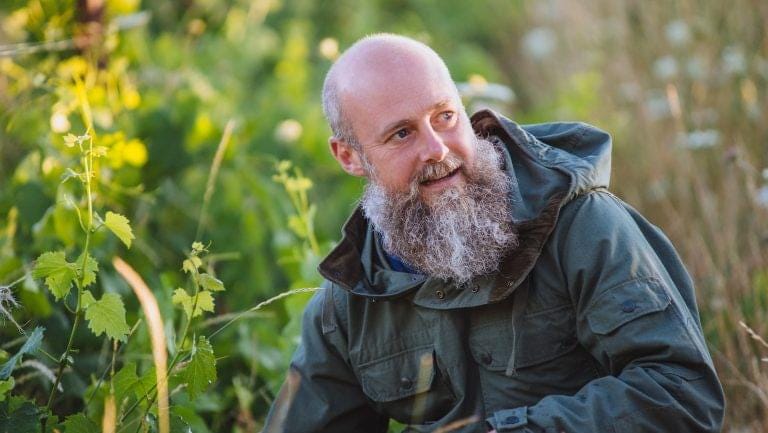
Hiyu Wine Farm 2021 ‘Aesalon’ Field Blend
The grazing animals interact with the plants to feed the life beneath the soil. Plants flower in waves, leaving their scent on the ripening clusters. They spray teas to draw this life and aroma into the canopy. Each parcel at the farm begins to develop its own biome.
The parcel harvested for Aesalon is in the far southeast corner of the farm with eastern exposure and was grafted from Pinot Gris to a field blend based on Spanish and Portuguese white varieties of Xarel-lo, Arinto, Verdelho, Albariño, Trousseau Gris, Godello, Albillo Real, and Macabeo. The grapes were macerated in a wooden vat for 5 days before being pressed by foot into old barrels where it aged for 20 months before bottling by hand. The 2021 vintage was the first release of Aesalon since 2019.
No. 07: The Carbonic
SILETTO FAMILY VINEYARD, SAN BENITO COUNTY, CENTRAL COAST, CALIFORNIA
One of the oldest and most storied winemaking regions in California, San Benito is home to the largest stretch of limestone soils for viticulture in the United States.

Adroît 2021 Trousseau Noir (325 cases / 13 barrels)
Adroît Wine is a passion project of master sommelier and winemaker Chris Miller, as an expedition into California’s under-appreciated winegrowing regions and grape varieties.
Fruit for Adroît’s Trousseau Noir was hand-harvested and whole-clustered fermented (small portion foot-stomped) with carbonic maceration then aged on fine lees in neutral barriques for 6 months to be bottled unfined and unfiltered.
No. 08: The Elevated
ALDER SPRINGS, MENDOCINO COUNTY, NORTH COAST, CALIFORNIA
Alder Springs Vineyard is known for producing exceptional fruit on its 6,000-acre ranch (only about 140 acres are planted) in Northern Mendocino, just 10 miles from the Pacific Ocean and ranging from 1,700 to 2,700 feet of elevation.
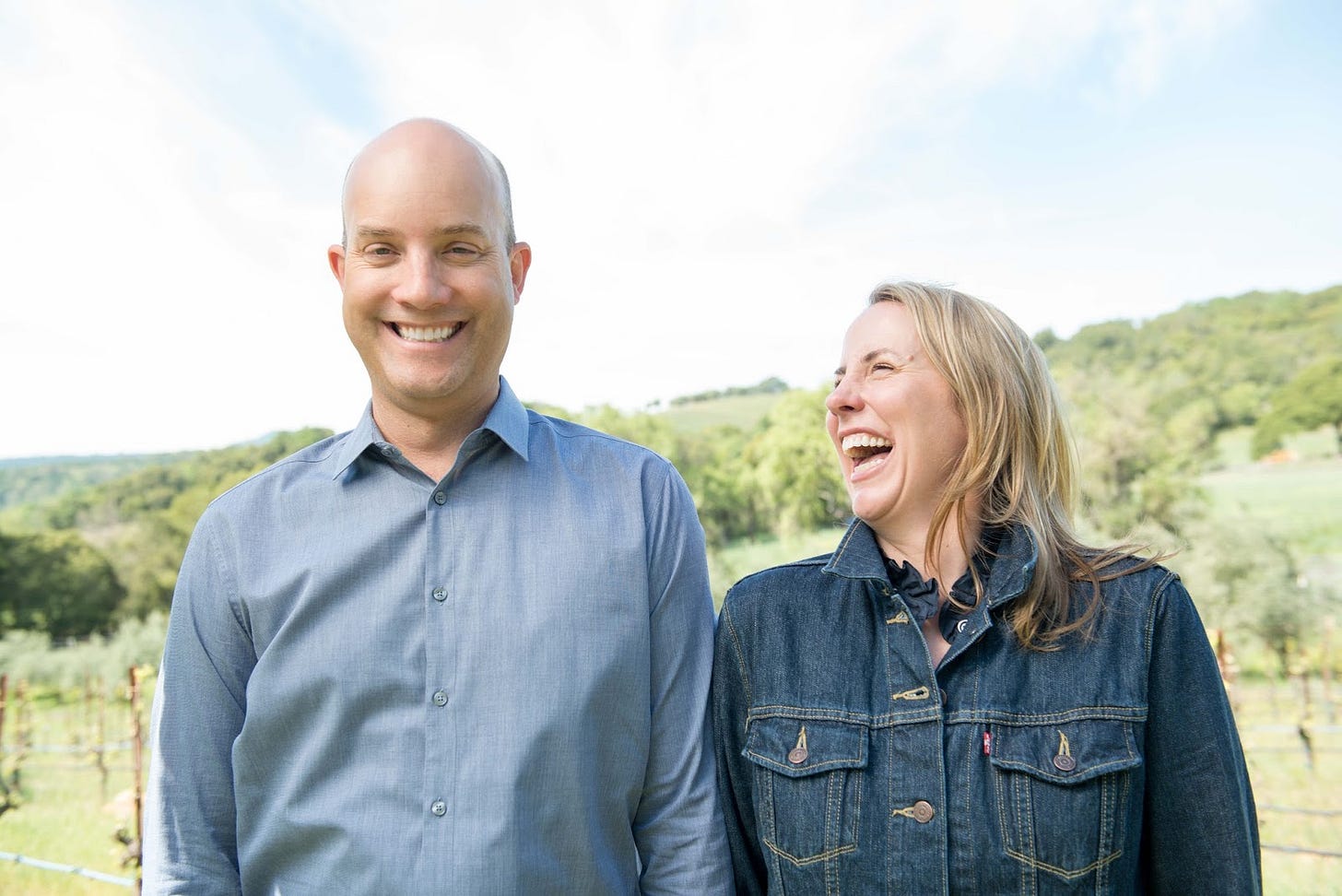
Edaphos 2022 Trousseau Noir (50 cases)
Greek for ‘base, ground or soil’, Edaphos was founded by winemakers Todd Gottula and Erin Brooks as a sibling label to Ernest Vineyards. This separate label celebrated and served as a sort of laboratory for the less mainstream of California in both varietals and techniques, beyond the usual suspects of Pinot Noir and Chardonnay. Edaphos has been retired and now fully integrated under Ernest Vineyards umbrella.
Grapes for this Trousseau Noir from Edaphos were hand-harvested, fermented, and aged in concrete egg and neutral barrel.
No. 09: The Heritage
OLIVET RANCH, RUSSIAN RIVER VALLEY, CALIFORNIA
In 2011, winemaker Ehren Jordan purchased an established vineyard on Olivet Road in Santa Rosa, next to the revered Olivet Lane Vineyard, which is home to some of the first Pinot Noir in the Russian River Valley AVA. The resulting Failla estate vineyard is Olivet Ranch, where he currently resides. The site is farmed biodynamically, including herbs that are used for the biodynamic preparations on property.
Failla 2021 Trousseau Noir (109 cases)
Ehren Jordan loves to experiment with his favorite varietals, coaxing out their various incarnations from different climates (cool, cooler, and coolest), soil types, and rootstock.
Grapes were hand-harvested at Olivet Ranch from vines with cuttings from some of Failla’s favorite Jura producers then fermented 100% whole cluster with 12 days on the skins to be aged for 11 months in 2 neutral puncheons.
No. 10: The Pioneer
BEARG RANCH VINEYARD, FOUNTAINGROVE DISTRICT, SONOMA COUNTY, CALIFORNIA
Grafted to Trousseau Noir, Gamay, Mondeuse, Poulsard and Pineau d’Aunis in 2016, Bearg Ranch in the Mayacamas Range had just begun producing fruit and 2018 is the first vintage bottled. Situated on a steep hillside and biodynamically farmed, this site is a landmark achievement in Sonoma County winegrowing.
Pax 2019 Trousseau Noir
The Trousseau Noir at Bearg Ranch is planted to four different selections (from vines in California and France) in three different soil types (red clay and Kidd-forward-cohasset series; gravel and silty soils; and Goulding-Toomes clay loam).
Grapes were hand-harvested and fermented 100% whole cluster then aged for 10 months in neutral French oak puncheons.
No. 11: The Contiguous (Vertical)
LUCHSINGER VINEYARD, BIG VALLEY, NORTH COAST, CALIFORNIA
Luchsinger Vineyard in Lake County is northern California’s only contiguous Trousseau Noir vineyard. Since 2002, the vineyard is planted at an elevation of 1,400 feet on volcanic alluvium soils laid over ancient riverbed cobblestones in the Big Valley AVA west of Clear Lake, the second largest natural body of water in California after Lake Tahoe. Incidentally, Trousseau Noir thrives in the long, warm days and cool nights of this AVA, retaining acidity and personality well in this arid environment.

Arnot-Roberts 2018 Trousseau Noir (550 cases / 22 barrels)
Arnot-Roberts 2017 Trousseau Noir
Arnot-Roberts 2016 Trousseau Noir (567 cases / 1 foudre, 5 puncheons, + 6 barrels)
Winemakers Duncan Arnot Meyers and Nathan Lee Roberts started Arnot-Roberts as a project featuring highly sought-after and allocated, specializing in Old World influenced bottlings from cool climate vineyard sites in northern California. Since their founding in 2001, they have spent a lot of time scouring the state for some of the best previously unknown vineyard sites, doing so with a remarkable respect for the environment.
Grapes are hand-harvested and fermented with native yeasts for both primary and secondary fermentation. All lots were fermented using 100% whole cluster then aged for 11 months in a combination of neutral French oak barrels, puncheons, and foudres.
No. 12: The Seafarer
BOHAN RANCH, SONOMA COAST, CALIFORNIA
Practically from the end of the world in a pocket above the fog line on rugged Bohan-Dillon Road, this dry-farmed Trousseau Noir was also from Luchsinger Vineyard cuttings. Incidentally, winemaker Tegan Passalacqua had negotiated4 with winegrower George Bohan to graft over 1 acre of vines formerly planted to Merlot in gravelly loam soils derived from sandstone and shale at Bohan Ranch at 1,400 feet elevation just 3 miles from the Pacific.
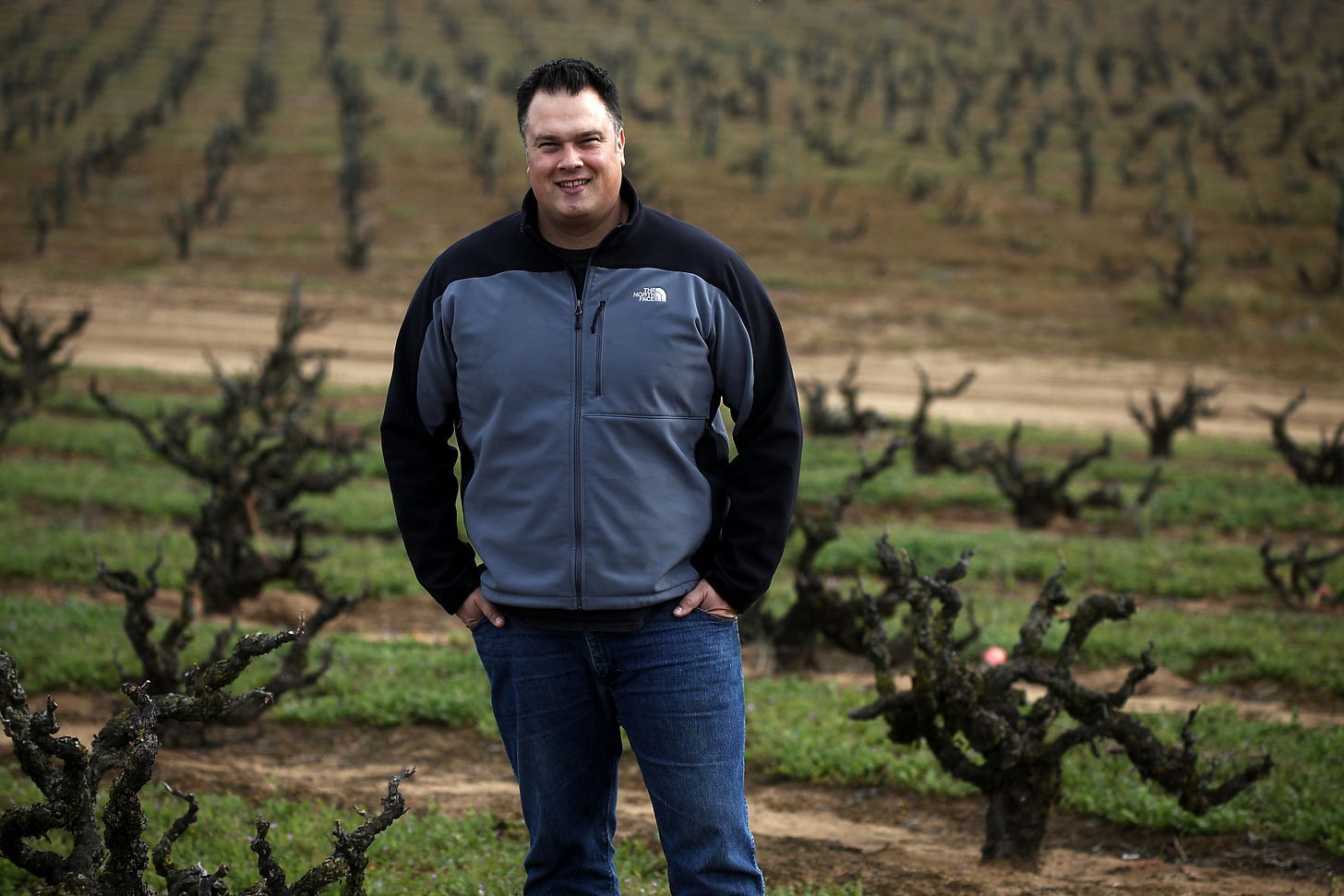
Sandlands 2016 Trousseau Noir
Sandlands is a project of Turley winemaker Tegan Passalacqua, encompassing forgotten classic California varieties, primarily grown in decomposed granite (sand) from regions and vineyards that have been farmed for many generations but have remained the outliers of California viticulture.
Wine is fermented with indigenous yeasts, little new oak, and essentially no manipulation aside from basic cellar handling of the wine.
No. 13: The Inspired
SISTERS VINEYARD, DUNDEE HILLS, WILLAMETTE VALLEY, OREGON
In 1989, Sisters Vineyard was named after the three Pinot sisters: (Pinot) Noir, (Pinot) Blanc, and (Pinot) Gris. Today, Sisters is The Eyrie’s experimental farm, with 8 varieties planted there. The youngest block serves double duty as a rootstock trial which is intensively measured and monitored. There are also 9 acres of hazelnuts planted at the site.
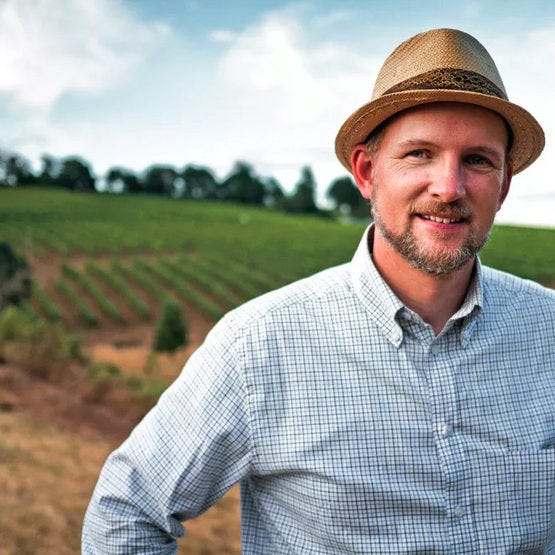
The Eyrie Vineyards 2016 Trousseau Noir (578 cases)
An ancient variety originating in the French Jura region, Trousseau Noir is centered in the hillside village of Montigny-lès-Arsures. Inspired by these wines, The Eyrie’s winemaker Jason Lett and crew planted Willamette Valley’s first Trousseau Noir in 2012.
The Eyrie’s Trousseau Noir is estate-grown, no-till, and hand-harvested then fermented using wild yeast to be aged for 10 months in neutral oak puncheons.
No. 15: The Fortified
SPENCER RANCH, JACKSON VALLEY, AMADOR COUNTY, SIERRA FOOTHILLS, CALIFORNIA
Bastardo (aka Trousseau Noir) was first planted at Spencer Ranch5 in Amador County in 1981. Although Bastardo has been a small but important component to St. Amant’s Vintage Ports (usually comprising 3-5% of the final blend), it has played a significant role in their Tawny Ports (typically 66% of the final blend).
As mentioned earlier, Bastardo was found in Madeira, the autonomous Portuguese archipelago off the northwest coast of Africa where it was also made into fortified wines widely enjoyed by America’s founding fathers in the late 1700s. However, after phylloxera swept through Europe and Madeira in the 1800s, Bastardo was not replanted, instead replaced with more productive varieties that were easier to grow. Bastardo, like many heirloom varieties, has the potential to make incredible wines, but unfortunately just not grown much anymore.
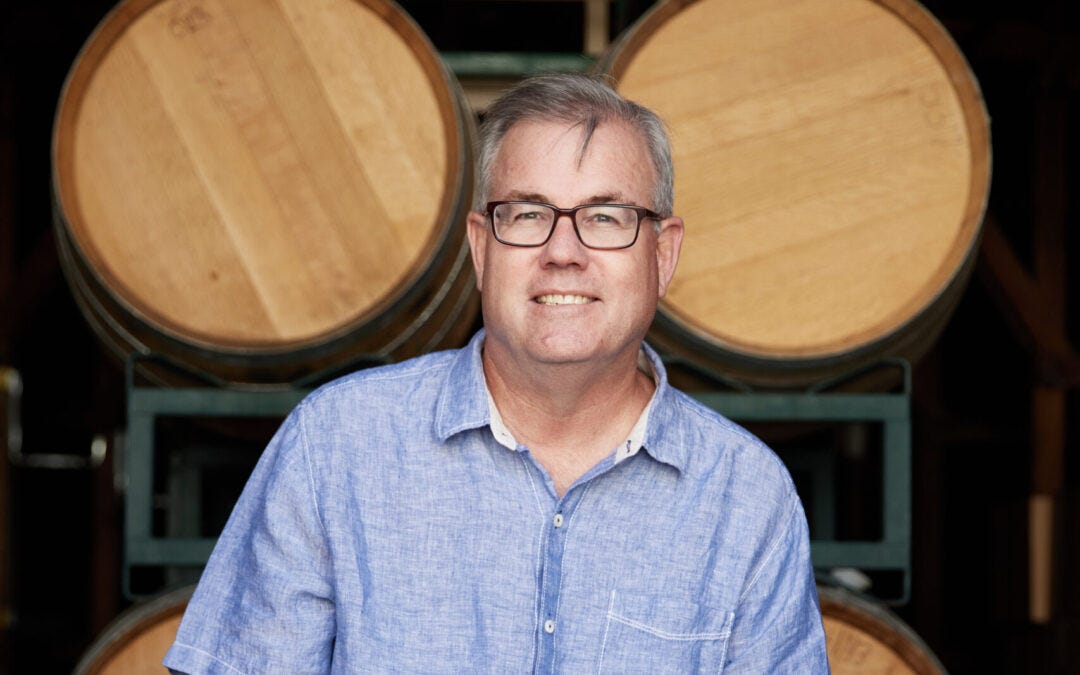
St. Amant 2008 ‘Bastardo’ Port (26 cases)
At harvest, the young Bastardo Port is uninteresting with light strawberry and earthy flavors, but after some time in the cellar, it is a variety that loves to be neglected. They literally do nothing to the wine — it remains hidden in the back of the barrel room: never topped, never racked, and never having any additions made to it. It just slowly matures, oxidizes, and develops into this complex wine with room-filling aromas, and a nutty marmalade finish that lingers for minutes.
Each year, depending on the yields in the vineyard, they set aside two-to-six barrels of Bastardo Port for their Tawny program. This 2008 ‘Bastardo’ Port explores the impact of a 15-year age, having lost 30% of its volume in this time. The larger head space contributes to the extensive oxidation over many years, making this the most Madeira-like of this release alongside 2013 and 2018. As it ages, the wine concentrates, the water in the wine evaporates, and the alcohol and sugar content rise — all resulting in increased acidity which balances out the wine’s richness.
❧
THE MENU
What a pleasure it was to collaborate again with chef Cedric Gayon of Five Tastes on a super flavorful menu with French and Asian influence to pair perfectly with both Trousseaus Gris and Noir. He knocked it out of the park with these well-composed courses!
1ST COURSE
spring fennel salad with seasonal citrus, minted pea purée, & togarashi vinaigrette
2ND COURSE
181 Cold Smoked salmon tartlet with marinated ikura, whipped mascarpone, herb sauce verte, & dill
3RD COURSE
sesame-crusted tuna with black sesame tahini, easter egg radish, nori maki, & avocado
4TH COURSE
bulgogi cold noodle salad with pickled daikon, cabbage kimchi, cucumber sunomono, & ginger soy dressing
CHEESE & CHARCUTERIE
Grand platter from Van Hook Cheese & Grocery (serves 20-24) — I specially requested Comté and Morbier (since both are from the Jura with their own AOCs, respectively) as well as Sneek gouda from Frisian Farms (my current favorite cheese).
DESSERT
checkerboard cake6 (made my me) with chocolate ganache frosting & red raspberry jam
THE WINEUP
/ May 9, 2025 @ Paulus Hook, Jersey City /
Domaine Gérard Villet NV Vin Mousseux de Qualité Rosé
Flatiron Wines SF
Sacred Thirst Selections (California) | 🇫🇷 sparkling rosé
Trousseau Noir
The Provenance ・ Ocean Spray cran-raspberry ・ chalky & spiced earth
Pax 2022/2021/2020 Trousseau Gris Rosé
Pax Wine
Skurnik Wine (New York) | 🇺🇸 still rosé
Trousseau Gris
The Pioneer ・ watermelon Jolly Rancher ・ melon rind
The Pioneer ・ profoundly watermelon ・ salty tangerine
The Pioneer ・ sweet prosciutto ends ・ butcher paper
Two Shepherds 2022 Trousseau Gris Skin-Fermented
Two Shepherds Winery
MFW Wine Co. (New York) | 🇺🇸 still orange
Trousseau Gris
The New Wave ・ Friendly’s watermelon cooler ・ apricot-nectarine tea
Jolie-Laide 2022 Trousseau Gris Skin-Fermented [2023 magnum]
Jolie-Laide Wines
Bowler Wine (New York) | 🇺🇸 still orange
Trousseau Gris
The Protégé ・ papaya pops ・ honey-drizzled stone fruit
Zeitgeist Cellars 2022/2021/2020 Trousseau Gris Blanc
Zeitgeist Cellars
🇺🇸 still white
Trousseau Gris
The Classic ・ pineapple rind ・ honeyed citrus
The Classic ・ juicy starfruit ・ bergamot bomb
The Classic ・ bruised pear ・ savory spritz
Fanucchi Vineyards 2004 Trousseau Gris Blanc
WineBid
🇺🇸 still white
Trousseau Gris
The OG・ Burgundian boon ・ Kooky Fanucchi
Hiyu Wine Farm 2021 ‘Aesalon’ Field Blend
Leon & Son Wine
Jenny & François Selections | 🇺🇸 still white
Xarel-lo / Arinto / Verdelho / Albariño / Trousseau Gris / Godello / Albillo Real / Macabeo
The Field Blend ・ ale adjacent ・ fruity leather
Carol Shelton 2006 Trousseau Gris ‘Sweet Caroline’ Late Harvest
WineBid
🇺🇸 dessert white [375mL]
Trousseau Gris
The Charmed ・ Italian biscotti ・ dried peach skins
Adroît 2021 Trousseau Noir
The Redwood
🇺🇸 still red
Trousseau Noir
The Carbonic ・ a touch of crunchy VA ・ plum aplomb
Edaphos 2022 Trousseau Noir
Ernest Vineyards
🇺🇸 still red
Trousseau Noir
The Elevated ・ cassis tea ・ wild orange blossom
Failla 2021 Trousseau Noir
Failla Wines
🇺🇸 still red
Trousseau Noir
The Heritage ・ Arbois analog ・ earthy red berries
Pax 2019 Trousseau Noir
Pax Wine
Skurnik Wine (New York) | 🇺🇸 still red
Trousseau Noir
The Pioneer ・ peppery currants ・ tuna & tahini’s pairing pal
Arnot-Roberts 2018/2017/2016 Trousseau Noir
WineBid
Polaner Selections (New York) | 🇺🇸 still red
Trousseau Noir
The Contiguous ・ smoky sage ・ cherry bouquet
The Contiguous ・ earthy licorice ・ raspberry & clove
The Contiguous ・ aged & autumnal ・ strawberry rhubarb
Sandlands 2016 Trousseau Noir
WineBid
Skurnik Wine (New York) | 🇺🇸 still red
Trousseau Noir
The Seafarer ・ menthol & bay leaf ・ rosy strawberry
The Eyrie Vineyards 2016 Trousseau Noir
WineBid
🇺🇸 still red
Trousseau Noir
The Inspired ・ funky blackberry ・ robust fruit
St. Amant 2008 ‘Bastardo’ Port
St. Amant Winery
🇺🇸 fortified red [500mL]
Trousseau Noir (Bastardo)
The Fortified ・ orange caramel ・ rich & nutty
THE CODA
Le Grand Prix du Trousseau Gris 2023 was the first large-scale tasting that I had organized hosted on my own. Wild to fathom that we’re now here two years later with its THIRD (!) installation. It just means that there’s still much story left to share about domestic Trousseaus Gris and Noir, so I’ll proudly remain that vessel for spreading the word and endless praises about these rare and esoteric varieties found stateside.
Kind of like how some folks (myself included) don’t have Thanksgiving-themed food (think: roast turkey, stuffing, etc.) outside of Thanksgiving Day as an attempt to savor and cherish a prized tradition and/or holiday, I too observe the same practice when it comes to Le Grand Prix du Trousseau Gris. This means I don’t drink much domestic Trousseau Gris or Trousseau Noir during the year to not take away from the grand tasting I endeavor to plan each year.
The weeks leading up to this annual tasting always feels like the most intense marathon. The research, the procurement, the preparation, the details, the tying-it-all-together, the execution — all of it. However, the moment the tasting begins, it never fails to go by in a flash. One minute I’m popping all the bottles and putting them on ice; the next I’m collecting empty bottles to wrap up for the night. You would think I’d feel sad that it was over, but the sensation is rather the opposite. I leave each tasting completely inspired — fresh ideas on new directions already brewing in my mind. Even with a year ahead of me to plan Le Grand Prix du Trousseau Gris 2026, I typically stumble upon my best plans right at the tail of the last tasting.
Since my first encounter with Trousseau Gris via Jolie-Laide’s 2017 bottling, I’ve felt a deep kinship with the grape itself. Growing up, I had various close friends, but they each came from different parts of my life, rarely sharing the same circles, so any intersection was usually just their friendship with me. Whether it was an honors class, junior varsity field hockey, bell choir, a co-ed fraternity, an internship cohort, a CPA study group, or even a cookbook club, I always felt like an outsider to any “group” of which I may have been a part — often misunderstood and not fully meshing with the vibe.
Much like Trousseau Gris finding a home away from its native Jura, tucked away in a modest 10-acre corner in the Russian River Valley, I’ve since found a supportive community of wine enthusiasts here in Jersey City. To this community: thank you for becoming a real “home” for yours truly. Your continued support, encouragement, and participation make possible the deepest dives drifts into the most fascinating rabbit holes rides. What a race — Fanucchi-O Drift, baby!
If you enjoyed this Substack post, please consider:
tapping ❤️ below
tapping 💬 and share your thoughts
subscribing to The Decanterbury Tales
Cheers,
Stefie aka ‘Two Bottle Stef’ 💁🏻♀️✌️🍾
“Is Trousseau’s Future in American Vineyards?” by Sophia McDonald from SevenFiftyDaily
“West Coast Trousseau” by Alder Yarrow from Jancis Robinson
“Local Tastes: Zeitgeist Cellars Expresses the Spirit of the Times” by Tim Carl from Napa Valley Register
Biggest thanks to winemaker Stuart Spencer of St. Amant for sharing all this amazing info with me!
combination of recipes: yellow layer cake, chocolate layer cake, + chocolate ganache frosting from Smitten Kitchen as well as red raspberry jam from St. Dalfour (using assembly instructions from House of Nash Eats)







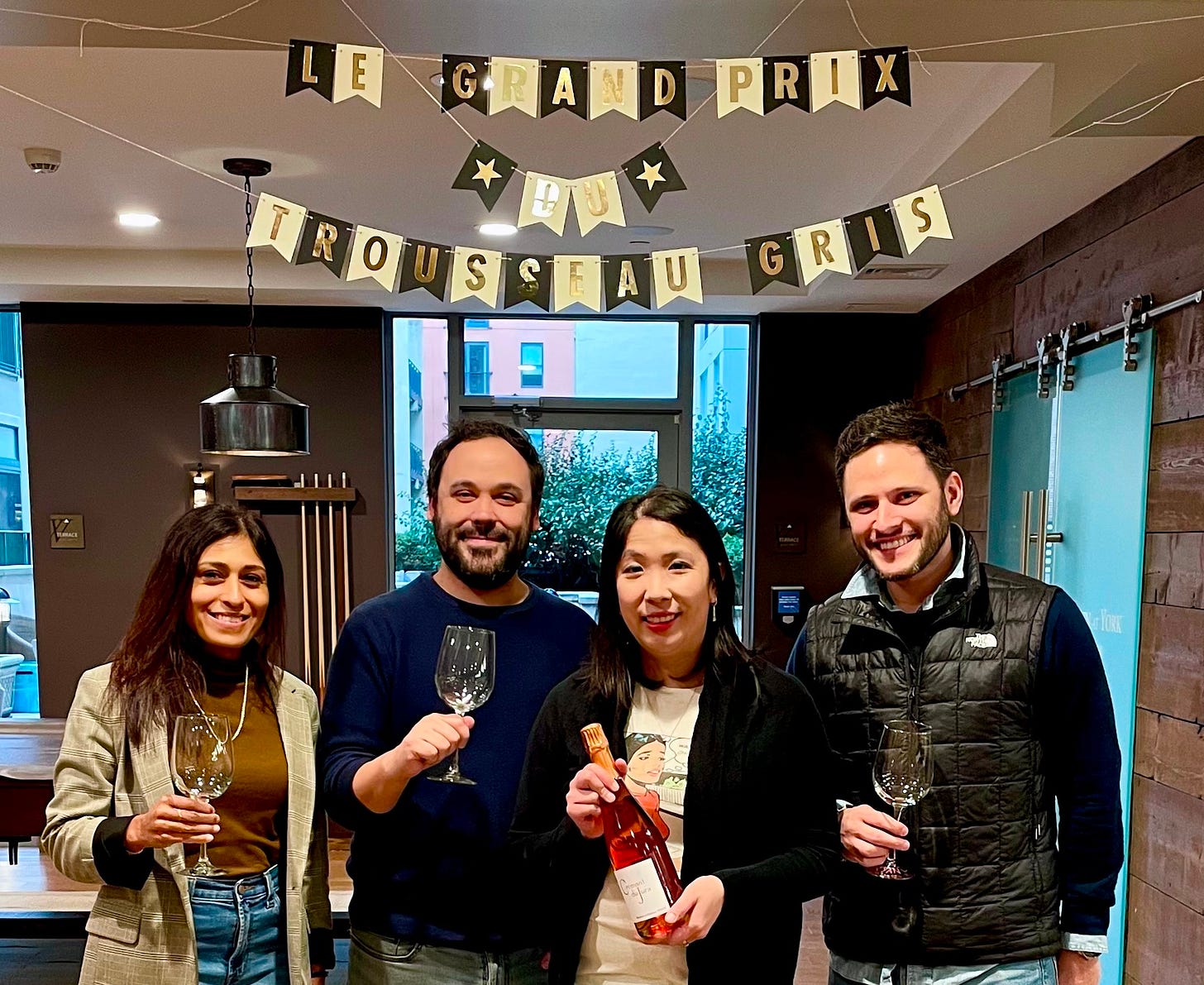

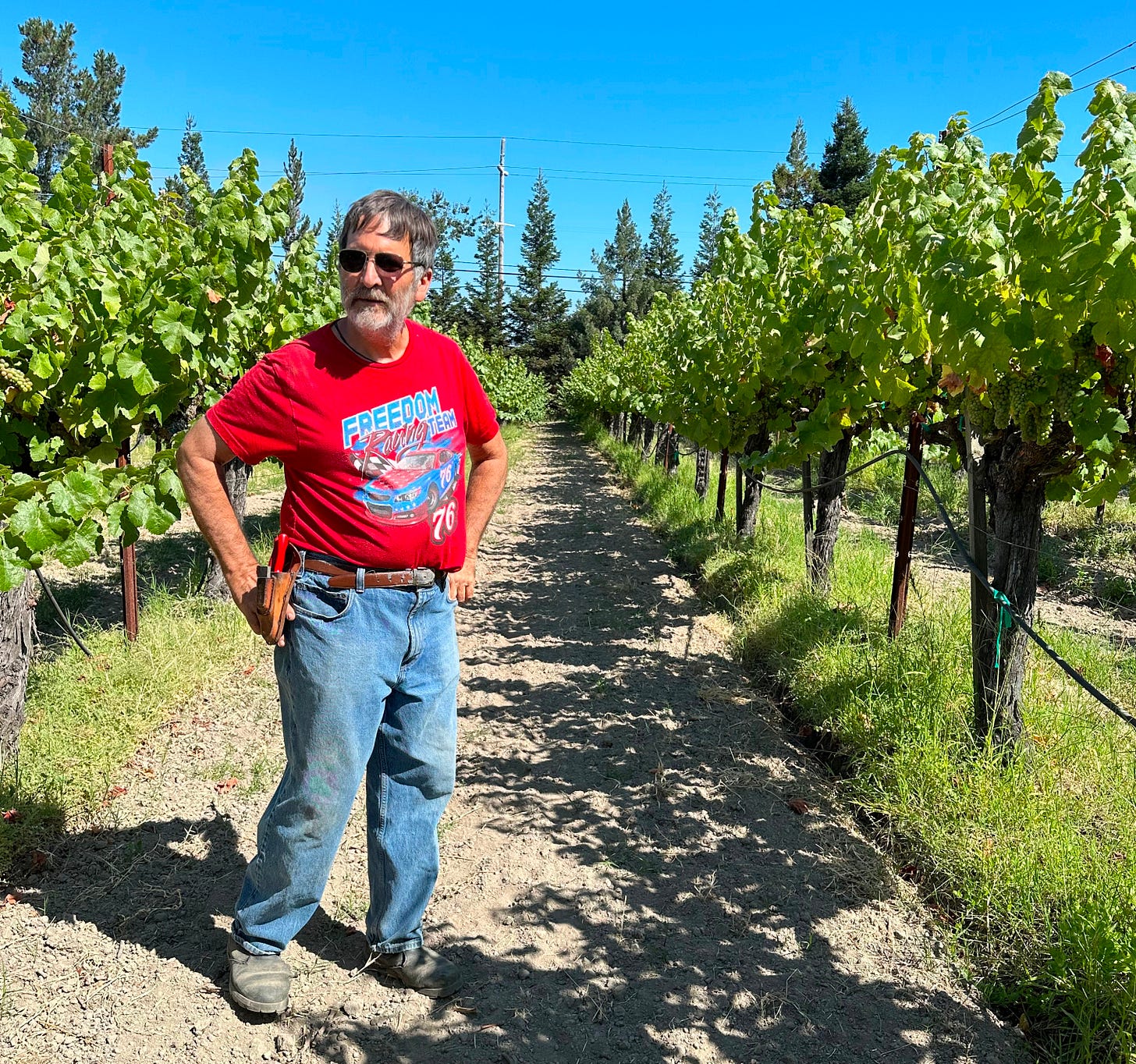



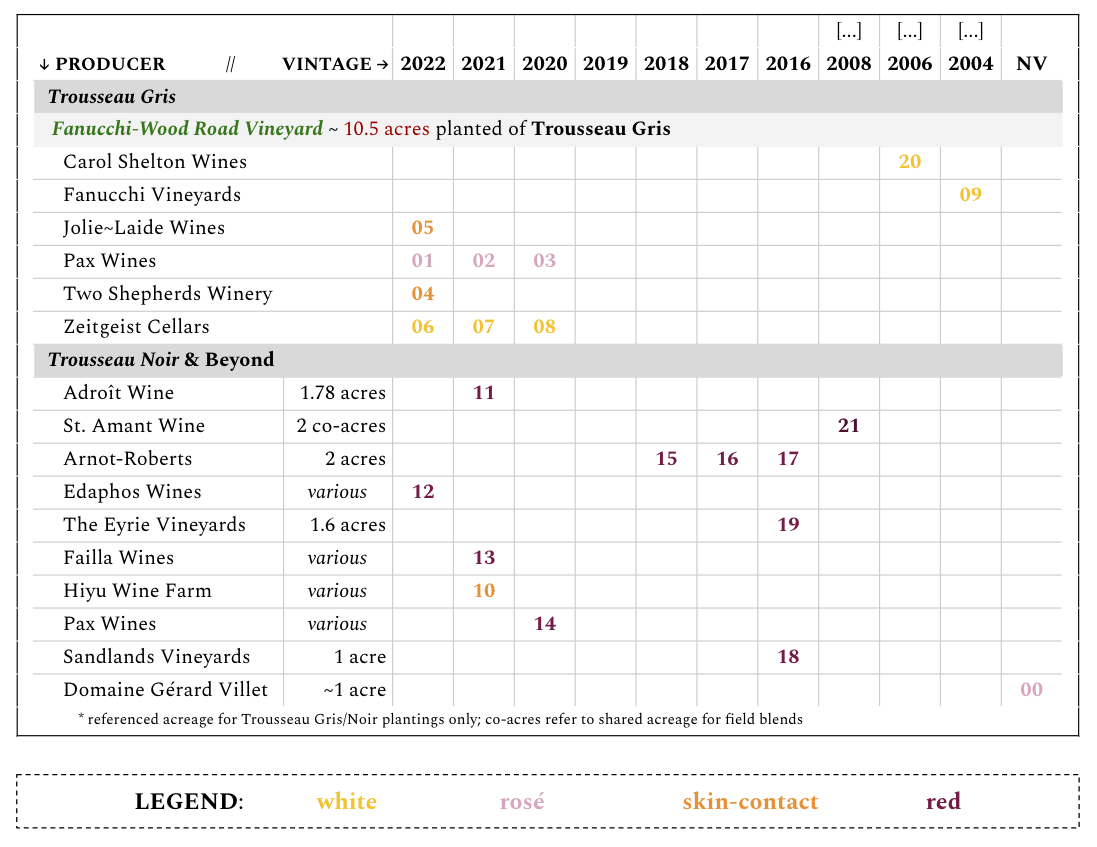
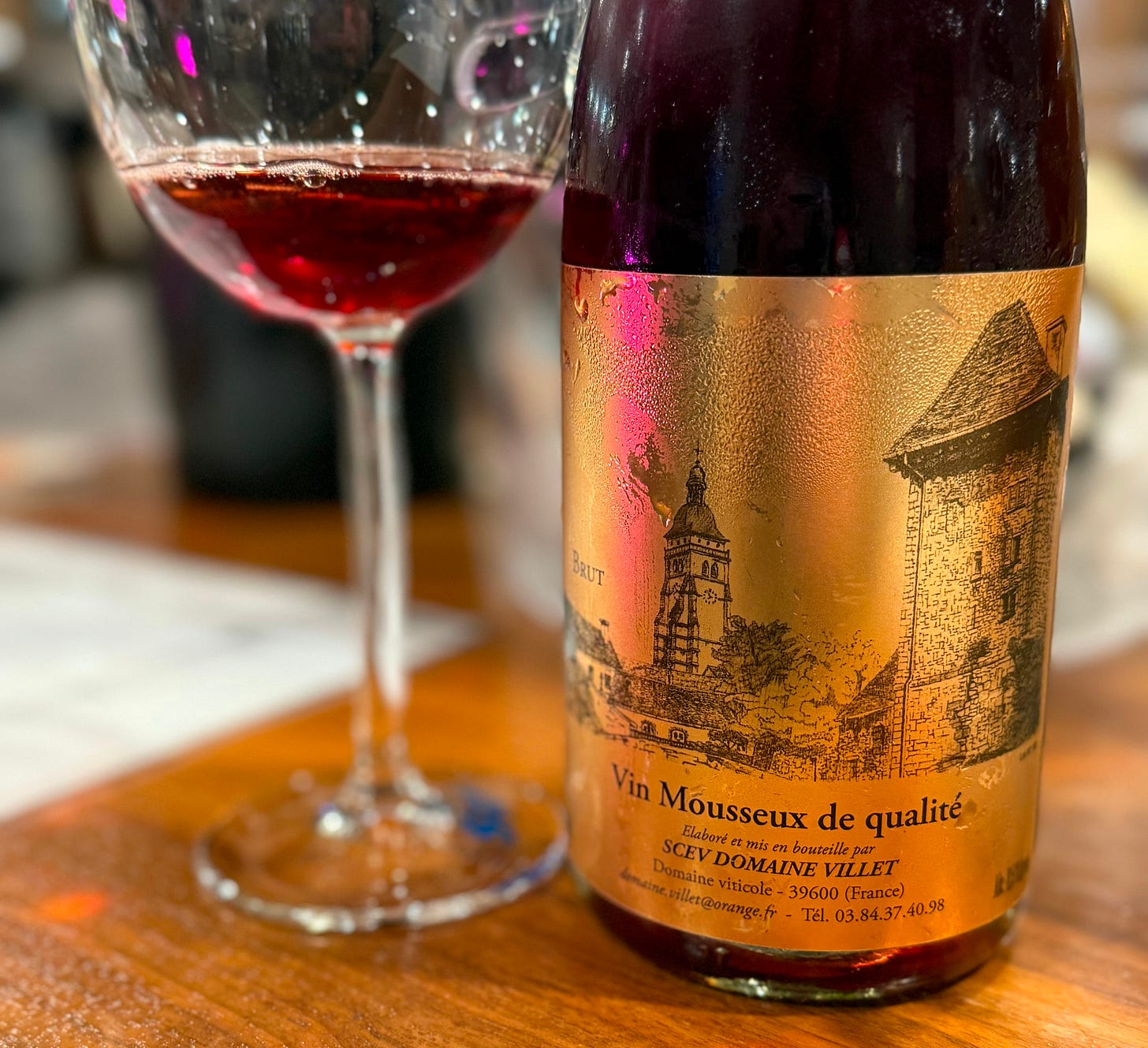
















A most impressive circuit of wines and reflection for this grand prix. Incredible courses from Chef Cedric, too. You truly are the Trousseau Queen with the most lovely pit team! Thrilled to read you already have fresh ideas on new directions ramping up. You are a treasure, Stefie, and so is the community you've built.